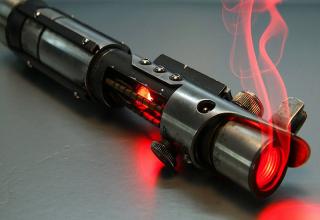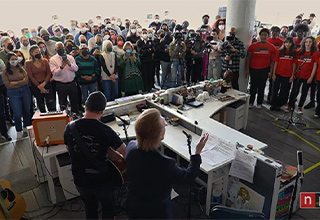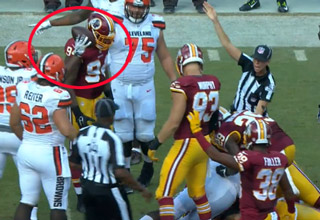Worlds That Will Make You Believe Star Wars Is Real
Worlds That Will Make You Believe Star Wars is Real
The fantastical planets in Star Wars preceded our discovery of real planets outside our solar system…but fiction isn’t too far from the facts. When we send our spacecraft into the solar system and point our telescopes beyond, we often see things that seem taken right out of the Star Wars universe.
Is there a more perfect time than May the 4th to compare real worlds to the ones depicted in Star Wars? Probably not…so here are a few: Mimas 
Saturn’s moon, Mimas, has become known as the “Death Star” moon because of how its 80-mile wide Herschel crater creates a resemblance to the Imperial battle station, especially when seen in this view from our Cassini spacecraft.
Kepler-452b 
The most recently revealed exoplanet dubbed as Earth’s bigger, older cousin, Kepler-452b, might make a good stand-in for Coruscant — the high tech world seen in several Star Wars films whose surface is encased in a single, globe-spanning city. Kepler-452b belongs to a star system 1.5 billion years older than Earth’s! That would give any technologically adept species more than a billion-year jump ahead of us.
CoRoT-7B 
At 3,600 degrees Fahrenheit, CoRoT-7B is a HOT planet. Discovered in 2010 with France’s CoRoT satellite, it’s some 480 light-years away, and has a diameter 70% larger than Earth’s, with nearly five times the mass. Possibly the boiled-down remnant of a Saturn-sized planet, its orbit is so tight that its star looms much larger in its sky than our sun appears to us, keeping its sun-facing surface molten!
Kepler-16b 
Luke Skywalker’s home planet, Tatooine, is said to possess a harsh, desert environment, swept by sandstorms as it roasts under the glare of twin suns. Real exoplanets in the thrall of two or more suns are even harsher! Kepler-16b was the Kepler telescope’s first discovery of a planet in a “circumbinary” orbit (a.k.a, circling both stars, as opposed to just one, in a double star system). This planet, however, is likely cold, about the size of Saturn, and gaseous, though partly composed of rock.
OGLE-2005-BLG-390 
Fictional Hoth is a frozen tundra that briefly serves as a base for the hidden Rebel Alliance. It’s also the nickname of real exoplanet OGLE-2005-BLG-390, a cold super-Earth whose surface temperature clocks in at minus 364 degrees Fahrenheit.
Kepler-22b 
Kepler-22b, analog to the Star Wars planet Kamino…which was the birthplace of the army of clone soldiers, is a super-Earth that could be covered in a super ocean. The jury is still out on Kepler-22b’s true nature; at 2.4 times Earth’s radius, it might even be gaseous. But if the ocean world idea turns out to be right, we can envision a physically plausible Kamino-like planet.
Gas Giants 
Gas giants of all stripes populate the real exoplanet universe; in Star Wars, a gas giant called Bespin is home to a “Cloud City” actively involved in atmospheric mining. Mining the atmospheres of giant gas planets is a staple of science fiction. We too have examined the question, and found that gases such as helium-3 and hydrogen could theoretically be extracted from the atmospheres of Uranus and Neptune.
Exomoons 
Endor, the forested realm of the Ewoks, orbits a gas giant. Exomoon detection is still in its infancy for scientists on Earth. However, a possible exomoon (a moon circling a distant planet) was observed in 2014 via microlensing. It will remain unconfirmed, however, since each microlensing event can be seen only once.
May the 4th be with you!






1 Comments